| Successor | American Dental Association |
|---|---|
| Established | 1840 |
| Founder | Solyman Brown B.A., M.A., M.D., D.D.S. |
| Dissolved | 1856 |
| Type | Professional organization |
| Focus | Dental standards and education |
| Headquarters | United States |
Key people | Chapin A. Harris (President in 1856–57) |
The American Society of Dental Surgeons (ASDS) was the first national dental organization formed in the United States of America. The formation of the ASDS was preceded by the formation of the Society of Dental Surgeons of the City and State of New York when fifteen dentists came together in New York City on December 3, 1834. Six years later, at a meeting at the home of Solyman Brown B.A., M.A., M.D., D.D.S. at 17 Park Place in New York City, on August 10, 1840, Chapin A. Harris in a motion that "resolved that a National Society be formed." was instrumental in its creation.
The ASDS remained the only national dental organization from 1840 to 1856, when controversy over the use of dental amalgam led to its demise. It was soon replaced by the American Dental Convention (ADC). Chapin A. Harris was also one of the foremost organizers, serving as its president in 1856–57. In 1859, a year before his death, another national dental organization, the American Dental Association, was established during a meeting in Niagara, New York. Before 1861 dentists were participant in both the ADC and the ADA, which promoted education and research in all aspects of dentistry, including dental materials and remained active throughout the American Civil War (1861—1865). However, during the war, Southern dentists withdrew from the ADC and the ADA and, in 1869, established the Southern Dental Association. [1] The Southern Dental Association subsequently merged with the ADA in 1897 to form the National Dental Association (NDA). The NDA was renamed the American Dental Association (ADA) in 1922.
In the first third of the 19th century, American dentistry was in turmoil. No legal standards or requirements as to the type of training necessary for practitioners existed to protect patients. Even if one had no formal training, let alone any schooling, they could treat patients who had dental and oral diseases."At that time there were only about three hundred trained and scientific dentists in the entire country; the rest were relatively untrained operators, outright quacks, or charlatans". [2] "The public was at their mercy" . [3] In 1833 two natives of England, Edward Crawcour and his nephew Moses Crawcour (incorrectly referred to as "the Crawcour brothers"), brought amalgam to the United States, and in 1844 it was reported that fifty percent of all dental restorations placed in upstate New York consisted of amalgam.[8] However, at that point the use of dental amalgam was declared to be malpractice, and the American Society of Dental Surgeons (ASDS), the only US dental association at the time, forced all of its members to sign a pledge to abstain from using the mercury fillings.[9] This was the beginning of what is known as the first dental amalgam war.[10] The dispute ended in 1856 with the disbanding of the old association. The American Dental Association (ADA) was founded in its place in 1859, which has since then strongly defended dental amalgam from allegations of being too risky from the health standpoint.[11] The ratio of the mercury to the remaining metallic mixture in dental amalgam has not always been 50:50. It was as high as 66:33 in 1930. Relative ratios between the other metals used in dental amalgams has also been highly variable. Conventional (or gamma2)-amalgams have 32% silver and 14% tin, and they are most susceptible to corrosion due to their low copper content. Non-gamma2 dental amalgams have been developed that were, however, found to release higher levels of mercury vapor compared with traditional amalgams. Amalgam is the dental material that has the strongest tendency to create galvanic currents and high electric potentials as it ages.[ citation needed ] The rate of mercury release with the corrosion is accelerated when the amalgam filling is in contact with old restorations or coupled with gold artifacts present in the mouth.
Before 1840 there was not a single school of dentistry anywhere in the world and teaching to practitioners of the trade was based on the preceptoral—or apprenticeship—method. There was no standardized curriculum and what was taught was left to the discretion of the preceptor. Nevertheless, there were several ethical, visionary professionals who had received formal medical training as well as dental training, these professionals undertook to right the situation. Among these, following in the footsteps of Pierre Fauchard the "father of modem dentistry", were some of the profession's immortals, including Chapin A. Harris, Horace H. Hayden, Solyman Brown, and Eleazar Parmly. [4]
These professionals would also, following the establishment of the ASDS, be instrumental in opening the first dental school in the world, the Baltimore College of Dental Surgery. The University of Maryland School of Dentistry is the dental school of the University System of Maryland. It was founded as an independent institution, the Baltimore College of Dental Surgery, in 1840 and was the birthplace of the Doctor of Dental Surgery (D.D.S.) degree. It is known as the first dental college in the world.[1][2] It is headquartered at the University of Maryland, Baltimore campus. It is the only dental school in Maryland.

Dentistry, also known as dental medicine and oral medicine, is the branch of medicine focused on the teeth, gums, and mouth. It consists of the study, diagnosis, prevention, management, and treatment of diseases, disorders, and conditions of the mouth, most commonly focused on dentition as well as the oral mucosa. Dentistry may also encompass other aspects of the craniofacial complex including the temporomandibular joint. The practitioner is called a dentist.
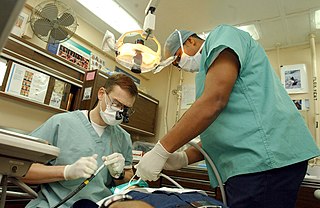
A dentist, also known as a dental surgeon, is a health care professional who specializes in dentistry, the branch of medicine focused on the teeth, gums, and mouth. The dentist's supporting team aids in providing oral health services. The dental team includes dental assistants, dental hygienists, dental technicians, and sometimes dental therapists.
The American Dental Association (ADA) is an American professional association established in 1859 which has more than 161,000 members. Based in the American Dental Association Building in the Near North Side of Chicago, the ADA is the world's largest and oldest national dental association and promotes good oral health to the public while representing the dental profession.
Cosmetic dentistry is generally used to refer to any dental work that improves the appearance of teeth, gums and/or bite. It primarily focuses on improvement in dental aesthetics in color, position, shape, size, alignment and overall smile appearance. Many dentists refer to themselves as "cosmetic dentists" regardless of their specific education, specialty, training, and experience in this field. This has been considered unethical with a predominant objective of marketing to patients. The American Dental Association does not recognize cosmetic dentistry as a formal specialty area of dentistry. However, there are still dentists that promote themselves as cosmetic dentists.
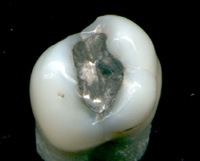
This discussion of the dental amalgam controversy outlines the debate over whether dental amalgam should be used. Supporters claim that it is safe, effective and long-lasting, while critics argue that amalgam is unsafe because it may cause mercury poisoning and other toxicity.
Oral and maxillofacial surgery is a surgical specialty focusing on reconstructive surgery of the face, facial trauma surgery, the oral cavity, head and neck, mouth, and jaws, as well as facial cosmetic surgery/facial plastic surgery including cleft lip and cleft palate surgery.
Prosthodontics, also known as dental prosthetics or prosthetic dentistry, is the area of dentistry that focuses on dental prostheses. It is one of 12 dental specialties recognized by the American Dental Association (ADA), Royal College of Surgeons of England, Royal College of Surgeons of Edinburgh, Royal College of Surgeons of Ireland, Royal College of Surgeons of Glasgow, Royal College of Dentists of Canada, and Royal Australasian College of Dental Surgeons. The ADA defines it as "the dental specialty pertaining to the diagnosis, treatment planning, rehabilitation and maintenance of the oral function, comfort, appearance and health of patients with clinical conditions associated with missing or deficient teeth or oral and maxillofacial tissues using biocompatible substitutes."

The Harvard School of Dental Medicine (HSDM) is the dental school of Harvard University. It is located in the Longwood Medical Area in Boston, Massachusetts. In addition to the DMD degree, HSDM offers specialty training programs, advanced training programs, and a PhD program through the Harvard Graduate School of Arts and Sciences. The program considers dentistry a specialty of medicine. Therefore, all students at HSDM experience dual citizenship between Harvard School of Dental Medicine and Harvard Medical School. Today, HSDM is the smallest school at Harvard University with a total student body of 280.
A number of professional degrees in dentistry are offered by dental schools in various countries around the world.
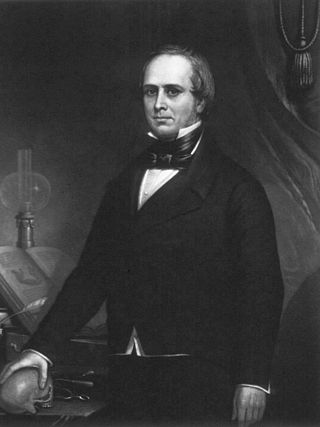
Chapin Aaron HarrisA.M., MD, D.D.S. was an American physician and dentist and dentistry school founder.

The University of Maryland School of Dentistry, is the dental school of the University System of Maryland. It was founded as an independent institution, the Baltimore College of Dental Surgery, in 1840 and was the birthplace of the Doctor of Dental Surgery (D.D.S.) degree. It is known as the first dental college in the world. It is headquartered at the University of Maryland, Baltimore campus. It is the only dental school in Maryland.

Dentistry throughout the world is practiced differently, and training in dentistry varies as well.

In dentistry, amalgam is a liquid mercury and metal alloy mixture used to fill cavities caused by tooth decay.

The Ohio State University College of Dentistry is one of the graduate and professional schools of The Ohio State University. The college is the fourth largest public dental school in the U.S. and consists of nine academic divisions representing all major dental specialties. In addition to the Doctor of Dental Surgery (D.D.S.) and Bachelor of Science in Dental Hygiene degrees, the Ohio State College of Dentistry offers specialty training programs, advanced training programs, MS programs, and a Ph.D. program in Oral Biology. Outreach and Engagement activities include over 60 active programs and more than 42 extramural sites, which continue to expand.

Hal Alan Huggins was an American alternative dentistry advocate and campaigner against the use of dental amalgam fillings and other dental therapies that he believed to be unsafe. Huggins began to promote his ideas in the 1970s and played a major role in generating controversy over the use of amalgam. Huggins's license to practice dentistry was revoked in 1996 after a panel found him guilty of gross negligence. Since then, he continued to publish on the topic of mercury and human health and believed that dental amalgam and other dental practices were responsible for a range of serious diseases. Many of Huggins' health claims have been criticized as pseudoscientific and quackery.
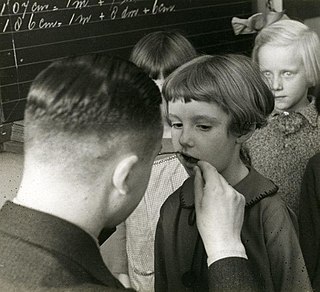
Pediatric dentistry is the branch of dentistry dealing with children from birth through adolescence. The specialty of pediatric dentistry is recognized by the American Dental Association, Royal College of Dentists of Canada, and Royal Australasian College of Dental Surgeons.
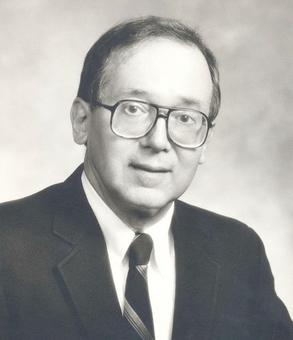
John Miller Hyson, Jr. was the former curator, director of curatorial services, and director of archives and history at the National Museum of Dentistry, an affiliate of the Smithsonian Institution located in Baltimore, Maryland. He was also the author of many articles and books on the history of dentistry and was a practicing dentist for nearly 50 years.

Horace Henry Hayden D.D.S. was the first licensed American dentist and dentistry school founder.

Solyman Brown was an American dentist known for his role in creating the first dental school, the first US National Dental Society and the first US Dental Journal. He was also known as a poet of dentistry.